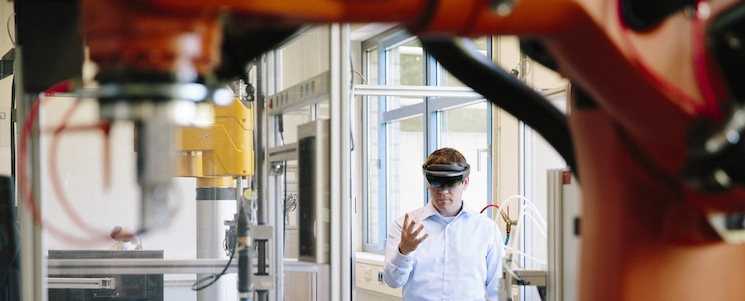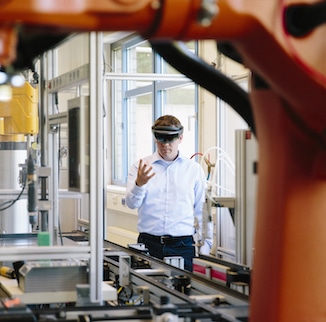
The first blog in this series discussed a recent Frost & Sullivan paper, The Future of Automation: A Primer by Karthik Sundaram, and focused on artificial intelligence (AI). As well as AI, that paper noted the influence of edge computing and augmented reality (AR) on the future of automation.
In this blog, AR becomes the topic of discussion. Let’s begin with some basics. Virtual reality (VR) as a term has already entered popular usage. The consumer marketplace includes VR products such as Oculus Rift that immerse the user in a digitally created, but artificial environment that only exists on a screen. VR appears to be realistic and enables the user to believe he or she is experiencing reality. AR goes beyond CR (Cinematic Reality) to provide the user with a combination of the virtual and the actual. It overlays virtual objects on top of the real world to aid the user in terms of understanding, perception or action. PDFs, diagrams, detailed instructions and other aids can be superimposed onto smart glasses and other devices.
The latest versions of this technology can even anchor virtual images to physical objects; as the user moves around an object, the virtual image adjusts to align precisely with the real world. In this way, an engineer, assembler, maintenance technician or inspector can walk around the shop floor or industrial facility and be assisted by AR images that fit the context of what is being viewed.
AR is no longer a distant, sci-fi dream. This technology is already flooding onto the shop floor and into field service. Analyst firm IDC put worldwide spending on AR/VR at around $18 billion last year, almost double the previous year. Far from being a consumer-dominated sector, commercial deployments already represent more than 60% of revenue. By 2021, that number will rise to more than 85% of the market. On-site assembly, safety, process manufacturing, training and industrial maintenance are among the most widely deployed use cases in the manufacturing sector.
The oil & gas sector is currently leading the way in the number of industrial-scale deployments. But use in the manufacturing sector is rising sharply. By 2025, Forrester Research predicts that about 14.4 million U.S. workers will be equipped with smart glasses, up from around half a million today. These numbers demonstrate that AR has moved firmly out of the early adopter category and is now entering the mainstream.
AR benefits include fewer instances of human error, more rapid execution time, lowered downtime, fewer breakdowns, greater workforce productivity, better fix rates and higher profitability. For those in complex discrete manufacturing, assembly, inspection, and maintenance processes can be more easily documented and reviewed by supervisors.
In addition, AR can provide new employees with step-by-step instructions to help them move through complex tasks with ease. This accelerates the process of attaining competence. Instead of it taking years to be able to assemble sophisticated systems without error, they can get there in a matter of weeks. They are guided every step of the way by systems that highlight which valve to address, which bolt to tighten (and to which degree of torque) and what to do with a faulty component. Everything is documented by the AR system and made available to MES and other plant systems.
The problem of lack of trained resources can also be materially assisted by AR. Inexperienced employees can access the know-how of veterans and remote experts via an AR device that helps them connect to the expert who can then walk them through the necessary actions. The remote expert can even annotate the display for the user in real time.
AR, then, brings together the digital and the physical worlds. By augmenting the real world with insights from the virtual world, those engaged in monitoring processes or maintaining systems gain improved decision-making capabilities. This adds enormous value to factory and process automation.
With the convergence of advanced technologies such as AI, AR and edge computing, industrial automation is going through a phase of explosive growth in the coming years. iBase-t stands ready to assist manufacturers in integrating AR software smoothly into existing systems. The iBase-t Digital Manufacturing Suite acts as the glue between MES, ERP, PLM and other shop floor and manufacturing systems to lead the organization along a reliable pathway toward end-to-end digitization.

